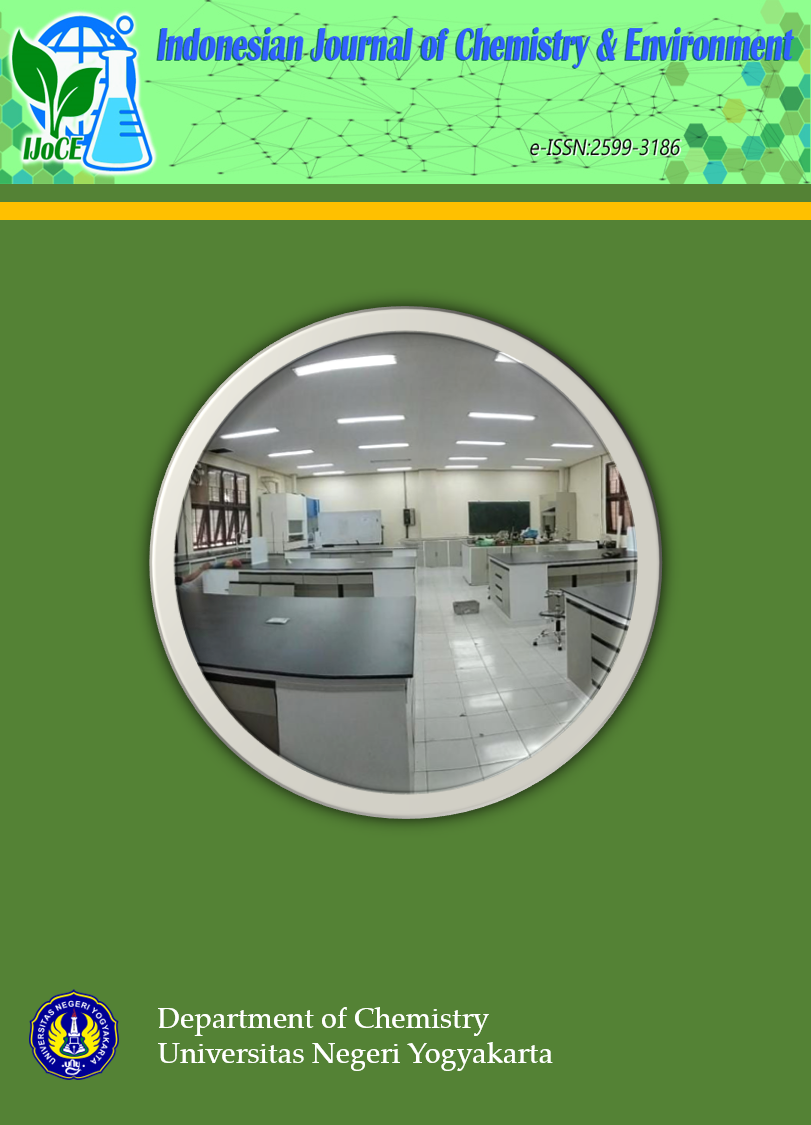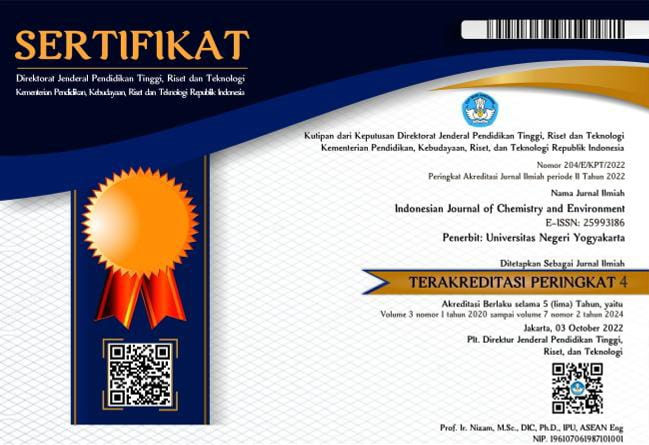A novel triazole as a rapidly acetate anion detector: synthesis, spectrophotometric, and TD-DFT studies
DOI:
https://doi.org/10.21831/ijoce.v7i1.72368Abstract
A well- Sodium acetate has been used as a food flavor enhancer in the production of cheese, snack food, and pastry products. Hence, accurate quantification of sodium acetate content in food has significant importance within the realm of food chemistry. A Schiff-base reaction was used to produce the sensor 1,2,4 triazole derivative 3. The assessment of sensor 3's response to sodium salts (HSO4-, H2PO4-, NO2-, F-, Br-, Cl-, and AcO-) was conducted through naked-eye detection and subsequently confirmed using UV-vis spectroscopy. The addition of ions to sensor 3 resulted in a spectral change. Notably, only AcO- presented a unique shift in the visible spectra, while no changes were observed for the other anions. Sensor 3 has a notable level of sensitivity, as seen by the naked eye, in detecting acetate anion. The frequent addition of AcO- to a solution of sensor 3 results in an interesting color shift from light yellow to red-orange. The stoichiometry and association constant (Ka) were determined using the Benesi-Hildebrand equation, yielding values of 1:2 and 9.93x109 M-2, respectively. The calculation of the limit of detection (LoD) yielded a result of 6.86 µM. The synthesis of sensor 3 was confirmed using 1HNMR, IR, and UV techniques. The DT-DFT, HOMO, and LUMO values were computed using the Gaussian 09 software.
Downloads
Published
How to Cite
Issue
Section
License
Authors who publish with this journal agree to the following terms:
- Authors retain copyright under a Creative Commons Attribution–ShareAlike License (CC BY SA) that allows others to share: copy, and redistribute the material in any medium or format, Adapt: remix, transform, and build upon the material, for any purpose, even commercially.
- Authors are able to enter into separate, additional contractual arrangements for the non-exclusive distribution of the journal's published version of the work (e.g., post it to an institutional repository or publish it in a book), with an acknowledgement of its initial publication in this journal.
- Authors are permitted and encouraged to post their work online (e.g., in institutional repositories or on their website) prior to and during the submission process, as it can lead to productive exchanges, as well as earlier and greater citation of published work.










